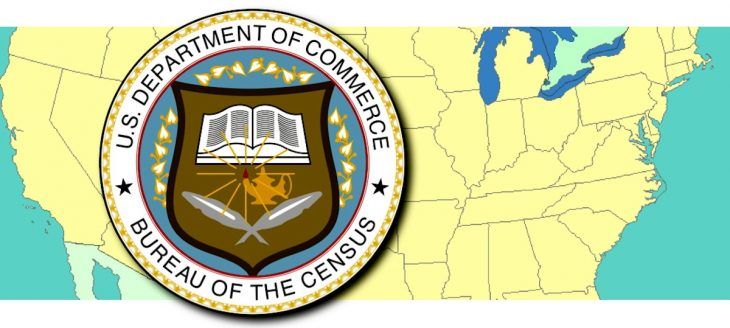U.S. median income up 3.2% in 2016, insurance coverage improves
by September 12, 2017 5:34 pm 249 views

U.S. household median incomes rose 3.2% last year to $59,039 for a family with two kids. This is the highest level reported, but the U.S. Census Department said survey questions were changed in 2013 and at that time the more detailed questions resulted in 3.2% increased income.
The change in questioning makes it impossible to compare median income historically, but the government said in a media call following Tuesday’s release that income levels have risen consecutively for the past two years in most demographics. A large part of that increase relates to more people working full-time jobs than in prior years. The report indicated 2.2 million more Americans were working full-time in 2016, compared to the prior year.
The wage gap between male and female workers narrowed in 2016 by 1.1% with women earning 80.5% of the income of their male counterparts. David Waddington, chief of social, economic division of the U.S. Census Bureau, told the media this was the first time the wage gap narrowed since 2007.
Minorities saw a higher increase in real median income compared to non-Hispanic Whites last year. Black median income come rose 5.7% and Hispanics saw a 4.3% rise in median incomes between 2015 and 2016. Non-Hispanic White median income rose 2% overall, while Asian households saw no significant gain or loss.
Regionally, income varied with the South leading that increase of 3.9% in 2016. Median incomes in the South however were the lowest of the four regions at $53,862. In the West income rose 3.3% to $64,275, in the Northeast median incomes were $64,390 and in the Midwest incomes were $58,305.
About 7% of U.S. households raked in more than $200,000 in 2016, a number higher than any the Census Bureau has recorded, when adjusted for inflation. And the number of American households that made less than $15,000 a year dipped to 11.2%, the lowest percentage since 2007, the Bureau reported.
While median incomes improved last year the national poverty rate remained high at 12.7%, albeit down from 13.5% the prior year. Last year there were 40.6 million people in the U.S. living in poverty, 2.5 million less than reported in 2015. The decrease in poverty was seen in most age demographics except for those age 65 and up. Children living in poverty declined to 18% in 2016 from 19.7% in the prior year.
Since the recession in 2007 the number of American’s living in poverty has fallen from about 47 million, and the overall poverty rate has come down from about 15% to 12.7% as of last year. While progress is being made in reducing the poverty rate, last year 18.5 million people reported family income below one-half of the poverty threshold. Roughly 6% of those living below the threshold are in deep poverty.
The income deficit for families in poverty – difference in dollars between a family’s income and its poverty threshold – averaged $10,505 last year. In 2015 that deficit was $10,246. For households led by a female that deficit was $11,139. (Another federal report will be released Thursday with county details on income and poverty. Talk Business & Politics will follow that report with a more granular look at the Natural State.)
Also Tuesday, the U.S. Census Bureau released the statewide levels of insurance coverage among respondents. Across the U.S. roughly 91.2% of adults had health insurance coverage in 2015, with 55% obtaining coverage from employer-sponsored plans. Roughly 9% of adults didn’t have coverage with the bulk of those being younger people and 26 being most common age.
The rise in people with insurance is directly related to Medicaid expansion which occurred with the Affordable Car Act. Among 31 states with Medicaid expansion the uninsured rate is 6.5% and that includes Washington, D.C. Arkansas is among the states with Medicaid expansion, one of very few in the South to do so.
There remains a wide disparity between states that opted to expand Medicaid and those that that did not. Among the 31 states and the District of Columbia that expanded Medicaid, the uninsured rate is 6.5%. Among states that did not expand Medicaid, the rate is 11.7%. In Arkansas the insured rate rate was about 8% in 2015, down from 16% in 2013.
